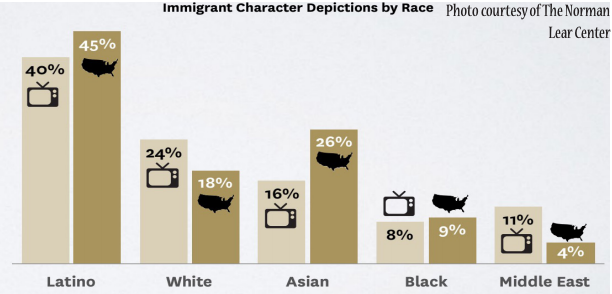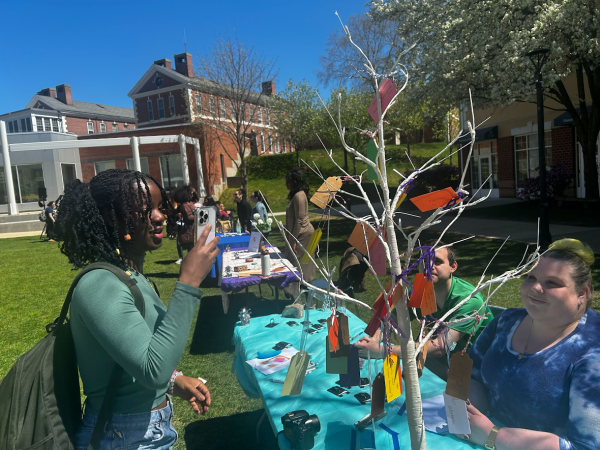A look at the portrayal of immigration on television
For years, television has been a way to bring visibility and shape people’s interpretations of the characters they portray. TV characters and stories have been given expanded importance and resonance with additional prejudice by political officials and media figures. This has raised additional distrust upon immigrant communities as a result of the unhealthy and often exaggerated stereotypes that are portrayed of Hispanic and Latinx communities on screen.
In 2019, Define American, a media and cultural association founded by Pulitzer-winning writer José Antonio Vargas, collaborated with USC Annenberg’s Norman Lear Center and The Hollywood Reporter on a new analysis comparing immigrants on scripted television and real life.
The three published their results of a study – that was released in Oct. 2019 – surrounding the questions of how immigrants are portrayed on television and how those portrayals compare to the real-life experiences of immigrants.
“The analysis examines the demographic, socio-economic, and social representations of immigrant characters depicted,” says the study’s overview, “as well as the context and use of any culturally- or politically-charged terms relating to immigration in 143 episodes of 47 television shows that aired in 2017 and 2018.”
The shows analyzed were ABC’s “Grey’s Anatomy,” Freeform’s “The Bold Type,” “The Fosters,” the CW’s “Jane the Virgin,” NBC’s “The Good Place,” and Netflix’s “Orange Is the New Black,” and “One Day at a Time.”
TV immigrants have tended to stick to traditional connections with criminality, unemployment, and poor education standards outside of citizenship-related storylines. The study found an over-emphasis on linking immigrants to crime. Violence was connected with 22 percent of immigrant characters on TV and 11 percent connected to criminality, down from 34 percent in 2018 but still out of line with real-world figures. In 2018, research by the Cato Institute and the Marshall Project showed that immigrants commit less violence than native-born Americans, regardless of identification status. In fact, according to the Cato Institute, the prison rate for legal and illegal immigrants, except arrests for immigration offenses, is less than 1 percent.
The report also showed that television often over-represented illegal immigrants strongly, too. 63 percent of TV characters with a recognized immigration status were undocumented immigrants or asylum seekers, compared to just 24 percent of actual American immigrants.
The study said that more than twenty immigration terms were tracked in each episode that was analyzed from each show.
“The words ‘deportation’ and ‘ICE’ appeared in about one-fifth of all episodes,” said page 18 of the study, “and the use of ‘undocumented’ appeared more frequently than the use of ‘illegal / illegals / illegal immigrant.’”
“Latino characters were the subject of 37% of the deportation mentions while White characters (44%) and female characters (63%) were the most likely characters to challenge the mentions of ‘deportation’ as unacceptable,” said the study. “Latino characters were also the most common recipients of mentions of ICE and the term was challenged as unacceptable just over half of the time (52%), and the challenges also mainly came from women (71%).”
Define American has consultations with showrunners, writers, and administrators to better ensure that stories and personalities relevant to immigrants are correctly and responsibly depicted. It worked on more than 23 TV and film projects in 2017, including NBC Superstore, Hulu’s East Los Big, and worked on an episode of “Grey’s Anatomy” in 2019 about a surgical intern who is a recipient of DACA. Another option, “Jane the Virgin” writer Rafael Agustin suggests, is to employ immigrants in the writers’ room for accuracy at the time of planning an episode.
For more information on topics of immigration in entertainment, visit the Define America webpage. To provide support to immigrating families and individuals, visit the Vera Institute of Justice for information on how to help.

Amanda is a senior majoring in communication with a concentration in journalism, and a double minor in political science and English. She has been involved...












